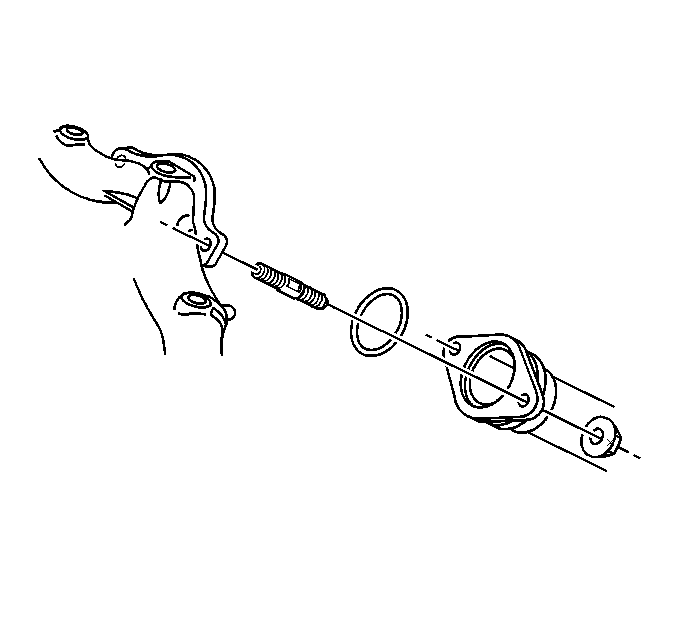Removal Procedure
Notice: To prevent internal damage to the flexible coupling of the catalytic converter assembly, the converter must be supported. The vertical movement at the rear of the catalytic converter assembly must not exceed 6 degrees up or down.
- Raise and support the vehicle. Refer to Lifting and Jacking the Vehicle in General Information.
- If the vehicle is equipped with All-Wheel-Drive, remove the propeller shaft. Refer to Propeller Shaft Replacement in Propeller Shaft.
- Remove the catalytic converter nuts from the exhaust manifold studs.
- Remove the oxygen sensor. Refer to Heated Oxygen Sensor 2 Replacement in Engine Controls - 3.4L.
- Remove the catalytic converter bolts.
- Remove the catalytic converter.


Installation Procedure
- Position and support the catalytic converter under the vehicle.
- Install a new catalytic converter gasket.
- Install the catalytic converter bolts. Do not tighten the bolts.
- Install a new catalytic converter seal.
- Install the catalytic converter nuts.
- Tighten the catalytic converter nuts to 34 N·m (25 lb ft).
- Tighten the catalytic converter bolts to 45 N·m (33 lb ft).
- Install the oxygen sensor. Refer to Heated Oxygen Sensor 2 Replacement in Engine Controls - 3.4L.
- Lower the vehicle.


Notice: Use the correct fastener in the correct location. Replacement fasteners must be the correct part number for that application. Fasteners requiring replacement or fasteners requiring the use of thread locking compound or sealant are identified in the service procedure. Do not use paints, lubricants, or corrosion inhibitors on fasteners or fastener joint surfaces unless specified. These coatings affect fastener torque and joint clamping force and may damage the fastener. Use the correct tightening sequence and specifications when installing fasteners in order to avoid damage to parts and systems.
Tighten
